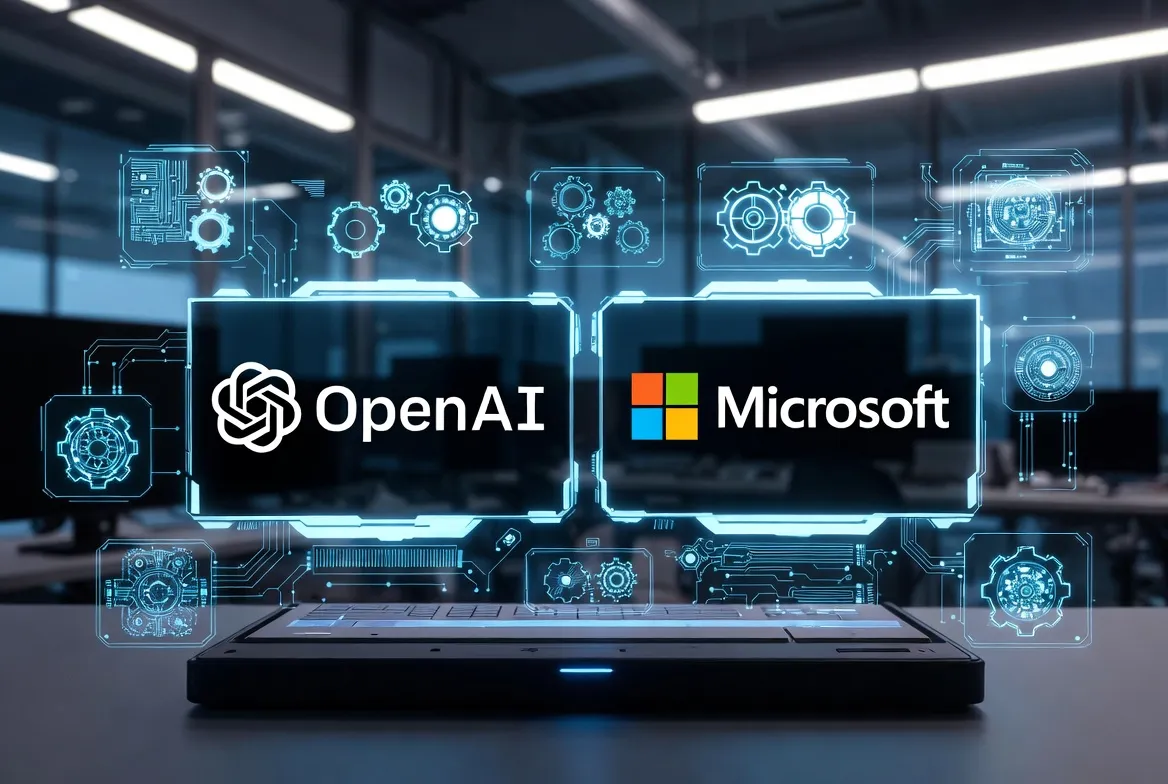Table of Contents
- 1.Artificial Intelligence in Machine Learning:
- Natural Language Processing (NLP):
- Virtual Assistants:
- Chatbots:
- Language Translation Services:
- Sentiment Analysis:
- Text Summarization:
- Computer Vision:
- Robotics and Automation:
- Personalization and Recommendation Systems:
- Healthcare and Medical Diagnosis:
- Gaming and Entertainment:
- Autonomous Vehicles:
- Finance and Fraud Detection:
- Ethical Considerations:
Make it More engaging and SEO-friendly. must have more than 2500 words: “AI, which stands for Artificial Intelligence, is a revolutionary technology that simulates human intelligence in machines. It enables computers to perform tasks that typically require human cognitive abilities, such as learning, reasoning, problem-solving, and decision-making. AI is a rapidly evolving field with far-reaching implications across various industries and aspects of our lives.
1.Artificial Intelligence in Machine Learning:
Machine Learning is a subset of AI that empowers machines to learn from data and improve their performance without being explicitly programmed. Through algorithms and statistical models, machines analyze vast datasets, recognize patterns, and make predictions or decisions based on the learned information.
Natural Language Processing (NLP):
NLP is an AI subfield focused on enabling machines to understand, interpret, and interact with human language. NLP powers virtual assistants, chatbots, language translation services, and sentiment analysis, significantly enhancing human-computer communication.
In the fast-paced world of technology, staying up-to-date with the latest trends AI is crucial for businesses and individuals alike. From cutting-edge advancements in natural language processing to the growing presence of AI in healthcare and finance, these trends are reshaping industries and revolutionizing daily interactions. Moreover, ethical considerations and responsible AI development are becoming more critical than ever, ensuring that AI remains a force for positive change in society. Embracing these trends will empower us to harness the true potential of AI and pave the way for a more innovative and interconnected future.
Virtual Assistants:
NLP forms the foundation of virtual assistants like Siri, Alexa, and Google Assistant. These AI-powered systems can understand spoken or written commands in natural language and perform various tasks, such as setting reminders, searching the web, or controlling smart home devices.
Chatbots:
NLP technology drives chatbots used in customer support, online services, and websites. These chatbots can understand and respond to user inquiries, providing instant support and information, and simulating human-like conversations.
Language Translation Services:
NLP algorithms are crucial for language translation services like Google Translate. By understanding the context and syntax of sentences, these systems can translate text or speech between different languages, facilitating global communication.
Sentiment Analysis:
NLP is used in sentiment analysis to determine the emotional tone behind written text. Businesses and organizations use this technology to gauge customer feedback, monitor social media sentiments, and make data-driven decisions based on public opinions.
Text Summarization:
NLP algorithms can automatically summarize long texts, condensing the content while preserving the key information. This is beneficial for quickly extracting essential details from large documents or news articles.
By harnessing the power of NLP, machines can bridge the gap between human language and computational understanding, making human-computer interactions more seamless and effective. The continuous advancement of NLP technologies holds the promise of further enhancing language understanding and communication between humans and machines, paving the way for new applications and possibilities in the AI domain.
Computer Vision:
Computer Vision is a technology that empowers machines to interpret and analyze visual information from images or videos. Through AI-driven computer vision systems, machines can recognize objects, detect faces, and understand intricate visual scenes, making significant contributions to various fields such as autonomous vehicles and medical imaging.
Object Recognition: AI-powered computer vision algorithms can identify and categorize objects within images or videos. This ability allows machines to distinguish between different objects like animals, vehicles, or household items, enabling applications like automated inventory management, object tracking, and security surveillance.
Face Detection: Computer vision systems equipped with AI can detect and locate human faces in images or video frames. This capability finds widespread use in applications like facial recognition for authentication purposes, automatic tagging in photo management software, and emotion analysis in social robotics.
Interpretation of Complex Visual Scenes: Advanced AI-driven computer vision models can comprehend complex visual scenes, understanding the relationships between objects and their context. This level of understanding is crucial in tasks like scene understanding, visual reasoning, and natural language image description.
Autonomous Vehicles: Computer vision plays a pivotal role in the development of autonomous vehicles. AI algorithms process data from cameras and other sensors to recognize traffic signs, pedestrians, and obstacles on the road. This information enables self-driving cars to make informed decisions, ensuring safe navigation and collision avoidance.
Medical Imaging: AI-driven computer vision has shown significant potential in medical imaging applications. By analyzing medical images such as X-rays, MRIs, and CT scans, computer vision algorithms can assist healthcare professionals in detecting abnormalities, aiding in early diagnosis and treatment planning.
The versatility of computer vision and its integration with AI technologies has transformed the way machines perceive and interact with the visual world. From automating tasks in various industries to revolutionizing fields like healthcare and transportation, computer vision continues to drive innovation and improve efficiency in a wide range of applications.
.
Robotics and Automation:
AI plays a crucial role in robotics and automation by enabling robots to perceive their environment, make decisions, and execute tasks autonomously. From manufacturing to healthcare, AI-driven robots are transforming industries and streamlining processes.
Personalization and Recommendation Systems:
AI-driven recommendation systems are widely used across various platforms, including e-commerce websites, streaming services, and social media networks, to deliver personalized content, product recommendations, and advertisements to users based on their behavior and preferences.
Personalized Content: Recommendation systems leverage AI algorithms to analyze users’ interactions with content, such as articles, videos, or music. By understanding what users have previously engaged with or enjoyed, these systems can suggest relevant and personalized content, enhancing user experience and encouraging further engagement.
Product Recommendations: E-commerce platforms utilize AI-driven recommendation systems to analyze user browsing and purchase history. By understanding individual preferences and browsing patterns, these systems can suggest products that match a user’s interests, increasing the likelihood of making a purchase and enhancing customer satisfaction.
Personalized Advertisements: Social media networks and online advertising platforms use AI-powered recommendation systems to display targeted advertisements to users. By analyzing user data, such as demographics, interests, and online behavior, these systems can present ads that are more likely to resonate with individual users, leading to higher ad engagement and conversion rates.
Streaming Service Recommendations: Streaming platforms, like Netflix or Spotify, employ AI-driven recommendation systems to curate personalized playlists or suggest movies, TV shows, or music based on a user’s viewing or listening history. This helps users discover new content aligned with their tastes and preferences.
The use of AI-driven recommendation systems has become essential for businesses to improve customer engagement, increase sales, and enhance user satisfaction. By providing personalized and relevant content or product suggestions, these systems create a more tailored and enjoyable experience for users, fostering loyalty and brand engagement. However, it’s important to address privacy concerns and ensure transparency in how user data is used to deliver these recommendations, maintaining a balance between personalization and data protection.
Healthcare and Medical Diagnosis:
AI is playing a transformative role in revolutionizing healthcare by offering applications in medical diagnosis, drug discovery, and personalized treatment plans. Machine learning algorithms, in particular, are enabling significant advancements in these areas.
Related Posts
Medical Diagnosis: AI-powered machine learning algorithms are capable of analyzing vast amounts of medical data, including patient records, lab results, and medical images such as X-rays, MRIs, and CT scans. By identifying patterns and correlations within this data, AI can help healthcare professionals make more accurate and timely diagnoses. For example, AI systems can assist in detecting abnormalities or early signs of diseases that may be challenging to identify with the naked eye.
Drug Discovery: The traditional process of drug discovery can be time-consuming and expensive. AI-driven approaches can accelerate this process by analyzing biological data and chemical compounds to identify potential drug candidates. Machine learning models can predict the effectiveness and safety of these compounds, saving considerable time and resources in the drug development pipeline.
Personalized Treatment Plans: Each patient is unique, and their response to medical treatments can vary. AI algorithms can process patient data, such as genetic information, medical history, and lifestyle factors, to create personalized treatment plans. By considering individual characteristics, AI can optimize treatment options, improving outcomes and reducing adverse effects.
Remote Patient Monitoring: AI-powered healthcare applications can facilitate remote patient monitoring, enabling healthcare providers to track patients’ health conditions in real-time. Machine learning algorithms can analyze data from wearable devices, like fitness trackers or health monitors, to detect changes in vital signs or health indicators. This can lead to early intervention and improved management of chronic conditions.
By harnessing the potential of AI and machine learning, healthcare is becoming more data-driven and precise. These technologies hold the promise of delivering more efficient and effective healthcare services, enhancing medical decision-making, and ultimately improving patient outcomes. However, it’s crucial to address challenges related to data privacy, regulatory compliance, and the ethical use of AI in healthcare to ensure that these technologies are integrated responsibly and for the benefit of patients and society as a whole.
Gaming and Entertainment:
In the gaming industry, AI plays a crucial role in various aspects, including the creation of intelligent non-player characters (NPCs), generating dynamic game environments, and enhancing player experiences through adaptive gameplay and difficulty adjustments.
Intelligent NPCs: AI-driven algorithms are used to create realistic and challenging NPCs that interact with players in a lifelike manner. These NPCs can simulate human-like behaviors, decision-making processes, and responses to the player’s actions. This makes the game more engaging and immersive, as players can face opponents that exhibit strategic thinking and adaptability.
Dynamic Game Environments: AI technologies enable game worlds to evolve and change dynamically based on player actions and choices. Through procedural generation techniques, AI algorithms can create diverse and ever-changing game environments, ensuring that players encounter new challenges and experiences in each playthrough.
Adaptive Gameplay: AI is employed to analyze players’ behaviors, skills, and preferences during gameplay. By continuously monitoring the player’s actions, the game can adapt and tailor the experience to suit individual styles. This adaptive approach ensures that players are appropriately challenged, keeping them engaged and motivated.
Difficulty Adjustments: AI-powered systems can adjust the difficulty level of the game on-the-fly. If a player finds a certain section too challenging or too easy, the AI can respond by adjusting enemy strength, puzzle complexity, or other relevant parameters. This feature helps maintain a balanced and enjoyable gaming experience for players of different skill levels.
The integration of AI in the gaming industry has led to more immersive and captivating gaming experiences. By creating dynamic and intelligent game elements, developers can offer players unique challenges and content, leading to increased enjoyment and replayability. As AI technologies continue to advance, we can expect even more innovative and sophisticated applications in the gaming world, enhancing the overall gaming experience for players worldwide.
Autonomous Vehicles:
Autonomous vehicles heavily depend on AI technologies, such as computer vision and machine learning, to perceive their surroundings, handle intricate road conditions, and make instant decisions for safe and efficient driving. These advanced systems enable self-driving cars to understand the environment, recognize and interpret objects like pedestrians, other vehicles, traffic signals, and road signs.
Computer vision plays a critical role in enabling autonomous vehicles to “see” the world using cameras and sensors, similar to how human eyes work. The AI algorithms process the visual data to detect objects, estimate distances, and identify potential obstacles or hazards on the road.
Machine learning is another crucial aspect that empowers self-driving vehicles to learn from vast amounts of data and experiences. The AI algorithms learn patterns and behavior from this data to improve decision-making capabilities over time. For instance, machine learning models can learn to predict the behavior of other road users, like anticipating when a pedestrian might cross the road or when a car might change lanes.
Moreover, AI technologies enable autonomous vehicles to handle complex situations where there might be unexpected events or adverse weather conditions. The AI-powered systems can adapt and respond appropriately to ensure safety and maintain smooth driving performance.
In summary, AI technologies are at the core of autonomous vehicles, allowing them to perceive, interpret, and react to the dynamic environment on the road. As these technologies continue to advance, self-driving cars have the potential to revolutionize transportation, making it safer, more efficient, and accessible for everyone.
Finance and Fraud Detection:
In the financial sector, AI-driven algorithms are extensively used to analyze vast amounts of data, enabling various applications such as detecting fraudulent activities, assessing credit risk, and providing personalized financial advice to customers.
Fraud Detection: AI algorithms can process enormous datasets from transactions and customer behaviors. By learning patterns and anomalies, these algorithms can identify potential fraudulent activities. For instance, they can detect unusual spending patterns or suspicious transactions that deviate from a customer’s typical behavior, helping financial institutions prevent fraud and protect their customers.
Credit Risk Assessment: When evaluating loan applications or creditworthiness, AI-powered systems can assess various factors like credit history, income, employment status, and more. The algorithms use historical data to predict the likelihood of a borrower defaulting on a loan. This assists lenders in making informed decisions and offering credit to applicants who are likely to repay on time.
Personalized Financial Advice: AI-based systems can analyze customers’ financial data, spending habits, and investment preferences. With this information, they can provide personalized financial advice and tailored investment strategies that align with individual goals and risk tolerances. This level of customization helps customers make better financial decisions and achieve their financial objectives.
By leveraging AI technologies, the financial industry can enhance efficiency, accuracy, and customer satisfaction. These algorithms continuously learn and adapt from new data, improving their performance over time and enabling financial institutions to offer more sophisticated and customer-centric services. However, it’s essential to ensure robust data privacy and security measures to protect sensitive financial information while benefiting from the potential advantages AI can bring to the sector.
Ethical Considerations:
As AI becomes more pervasive, ethical considerations regarding data privacy, bias in algorithms, and the impact on the workforce are gaining prominence. Striking a balance between innovation and responsible AI deployment is crucial for a sustainable future.
The potential of AI is vast, and its continuous development promises to shape industries and society profoundly. However, responsible implementation, transparency, and ongoing research and collaboration are essential to harness the full potential of AI for the benefit of humanity. As AI continues to evolve, it is essential to maintain an ethical and human-centric approach to ensure that it augments human capabilities and improves the overall quality of life.”



